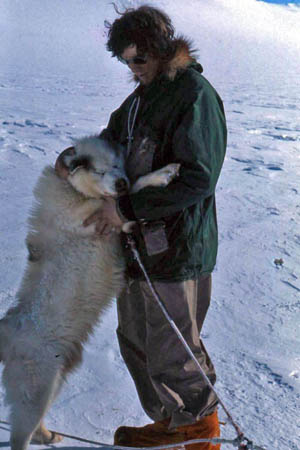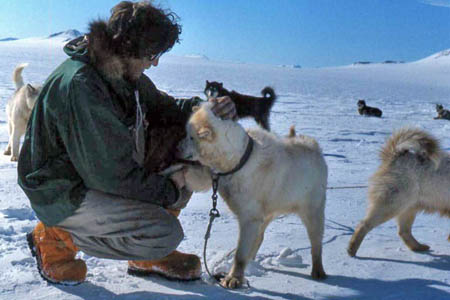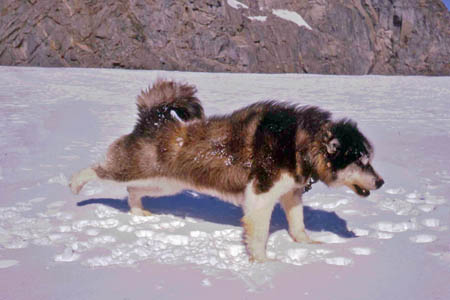In this Post
From the
Editor: PostScript – From Famine to Feast
F.I.D.O.: From the Other Side of the World to Qimmiq Territory
Oh, those dog commands!
Dogs – One of the many reasons I loved them
Wally Herbert’s dogs – the Norwegian connection
Nansen Sledge Production
Langsomt på Svalbard (Slowly on Svalbard) Deferred for One Year
Book Review: QIMMEQ – The Greenland Sled Dog
Siu-Ling Han Memorial Scholarship
The Trip of a Lifetime
F.I.D.O.: From the Other Side of the World to Qimmiq Territory
Oh, those dog commands!
Dogs – One of the many reasons I loved them
Wally Herbert’s dogs – the Norwegian connection
Nansen Sledge Production
Langsomt på Svalbard (Slowly on Svalbard) Deferred for One Year
Book Review: QIMMEQ – The Greenland Sled Dog
Siu-Ling Han Memorial Scholarship
The Trip of a Lifetime
Navigating This Site
Index of articles by subject
Index of Journal editions by
volume number
Index of PostScript editions by publication number
Search The Fan Hitch
Articles to download and print
Ordering Ken MacRury's Thesis
Our comprehensive list of resources
Defining the Inuit Dog
Talk to The Fan Hitch
Shop & Support Center
The Fan Hitch home page
Index of articles by subject
Index of Journal editions by
volume number
Index of PostScript editions by publication number
Search The Fan Hitch
Articles to download and print
Ordering Ken MacRury's Thesis
Our comprehensive list of resources
Defining the Inuit Dog
Talk to The Fan Hitch
Shop & Support Center
The Fan Hitch home page
Editor's/Publisher's
Statement
Editor: Sue Hamilton
Webmaster: Mark Hamilton
The Fan Hitch Website and
Publications of the Inuit Sled Dog– the
quarterly Journal (retired
in 2018) and PostScript – are dedicated to the aboriginal
landrace traditional Inuit Sled Dog as well as
related Inuit culture and traditions.
PostScript is
published intermittently as
material becomes available. Online access is
free at: https://thefanhitch.org.
PostScript welcomes your
letters, stories, comments and suggestions.
The editorial staff reserves the right to
edit submissions used for publication.
Contents of The Fan Hitch Website and its publications are protected by international copyright laws. No photo, drawing or text may be reproduced in any form without written consent. Webmasters please note: written consent is necessary before linking this site to yours! Please forward requests to Sue Hamilton, 55 Town Line Rd., Harwinton, Connecticut 06791, USA or mail@thefanhitch.org
Contents of The Fan Hitch Website and its publications are protected by international copyright laws. No photo, drawing or text may be reproduced in any form without written consent. Webmasters please note: written consent is necessary before linking this site to yours! Please forward requests to Sue Hamilton, 55 Town Line Rd., Harwinton, Connecticut 06791, USA or mail@thefanhitch.org
Dogs – One of the Many Reasons I Loved Them
Dave Singleton, Geologist
Stonington Base E 1972 and 1973
This story has been reprinted here with the kind permission of the author and the Marguerite Bay, Antarctica Website.
In 1972 when I was employed as a Stonington-based geologist, the first of my two years on that base, we made a number of geology and survey trips during the winter period into what we called the Trough. This was a short trip into the fjord areas behind Square Bay to the north of base. The route there was via the Northeast Glacier, along the By-pass at the top of the McClary Glacier and through what we called Swithinbank Glacier. The latter was notorious for containing some large crevasse systems. Sometimes it was good but it was mostly pot luck. Across all my journeys to the Trough I experienced both good and bad but on 6th July 1972 I was unlucky.
The signs were not great when we arrived at Swithinbank Nunatak camp on 5th July 1972. The big hole that had been there on a previous trip was still there with a number of precarious snow bridges for heavy sledges. The camp was also on a load of holes so you had to watch your step.

Rocky and Dave
photo: Singleton
The following day it was my turn to lead us across the Swithinbank Glacier with a 600 pound sledge – joy! I was following the route of another sledge unit that we had just met the previous day on their way back from surveying the Arrowsmith Peninsula area. I got off to a fast start until I reached the Arrowsmith party’s last camp. Contrast was not good and I suddenly was confronted with a very steep short drop. I had to turn my sledge over to avoid crushing any dogs as I rapidly accelerated towards them. This was the first of four very frustrating turn overs. Continuing on along the Arrowsmith party’s route I entered very heavily crevassed terrain.
The body language of the lead dogs (Dusty, Rocky and Nog) told me this was no place to be so I pulled off the track and headed more for Cornerstone which marked the other side of the glacier and the entrance into the Trough area. The snow surface had deteriorated and it was difficult to progress in the soft conditions. I had not gone very far when the back of my sledge dropped into a huge hole. I had just quickly got off the crevasse and released my dogs from the sledge, when Drummy Small (GA), travelling behind, shouted that he needed help to get one of his big dogs out of another hole. At that moment, possibly slightly distracted and having just checked the bridge, I fell into the crevasse up to my armpits. Stupidly I had taken my skis off prior to this. The sledge then dropped again.

Shirl Q
photo: Singleton
Looking down below my dangling legs, the crevasse appeared to narrow about 60 feet down and then all you could see was black. It was deep. This was when I realised the benefits of dog travel. Because I had released my team, I was able to call old Shirl over, grab the trace and pull myself out. Of course I got the statutory face licking as I climbed back onto the surface. It was a close thing and I can only wonder how things would have ended up without the dogs.
Needless to say, in true FIDS style, with a bit of help securing and unloading my sledge, I was on my way again having only lost one box of dog food down the crevasse. Although I still had problems with holes even with John Yates (Surveyor) carefully ski leading my team out of the danger we eventually made Cornerstone camp safely. I learned later that the Arrowsmith party had travelled through that crevassed area to their camp in the dark. How lucky were they? I swore I would stick to my old tried and tested route next time.

Nog
photo: Singleton
This story was just one example of the many reasons why I grew to love dogs as a way of travelling in Antarctica. Over the two years they got me out of many a scrape, often against the odds, whilst providing excellent company and wonderful entertainment along the way.